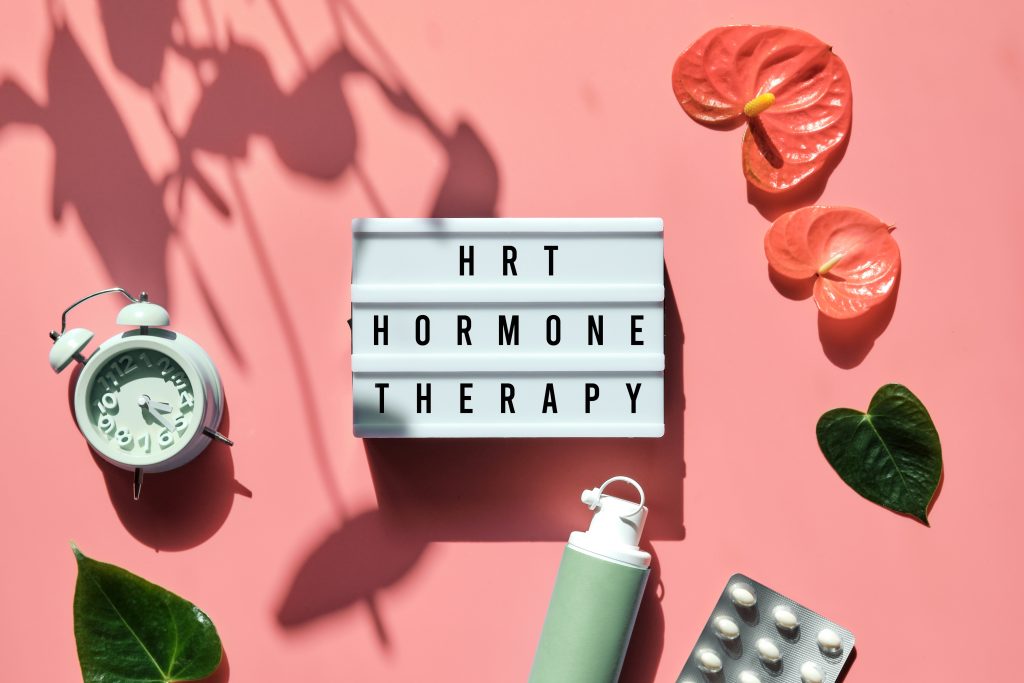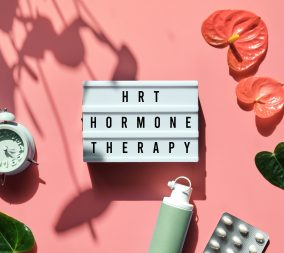
As women approach menopause, they often encounter a range of physical and emotional symptoms that can negatively impact their quality of life. Hormone Replacement Therapy (HRT), or Menopausal Hormone Therapy (MHT), refers to medical management of these symptoms using supplemental estrogen plus or minus progesterone. In this blog, we’ll delve into the nuanced landscape of MHT, exploring advantages, associated risks, and the populations of women who might benefit from it.
Definitions
Before we get too much further, I want to provide some helpful definitions. Menopause is defined clinically (not with labs) as 12 months without a menstrual period, perimenopause is the time around menopause (the years before or after), and post-menopause is anytime after that 12 months of no periods has occurred. There are characteristic hormone changes associated with menopause that we can measure in the blood, but until 12 months have passed without a period, these numbers are not diagnostic. The language we use around menopause can be confusing, in part because it is characterized retrospectively, that is, we don’t know that a woman has gone through menopause until 12 months later!
What does hormone therapy help with?
MHT is best at treating vasomotor symptoms (hot flashes and night sweats), poor sleep quality, and mood disturbance associated with menopause. Some studies have also shown an improvement in joint aches and pain with MHT. Genitourinary syndrome of menopause (GSM), which can involve vaginal dryness, vulvar irritation, pain with sex and frequent urinary tract infections (UTIs), is also improved with systemic MHT. However, if vulvovaginal symptoms are the primary issue, local vaginal estrogen is preferred over systemic treatment. All in all, the hormonal shift to a lower estrogen environment can be treated with MHT, but there are often other factors contributing to a patient’s symptoms. It is less clear whether other concerns attributed to perimenopause or menopause, such as weight gain or low libido, are improved with MHT.
But isn’t hormone therapy dangerous!?
It’s impossible to talk about hormone therapy for menopause without discussing the women’s health initiative (WHI). The WHI was a large-scale research effort started in 1991 that aimed to assess the benefits and risks of hormone therapy in postmenopausal women. Prior studies had associated numerous health benefits with MHT, and treating menopause symptoms with hormones was standard practice. The WHI was discontinued after 5 years due to an increased incidence of breast cancer, heart disease, stroke, and blood clots among some groups of participants receiving certain hormone therapy regimens. Due to the risks it identified, the WHI led to a generation of doctors and patients being incredibly wary of MHT, despite its benefits for appropriate patients.
Who can safely use hormone therapy?
Subgroup analysis within the WHI revealed that for healthy women less than 60 years old, or within 10 years of menopause, MHT was effective and quite safe. For these women, in addition to effectively treating menopause symptoms, heart disease and all cause mortality were lower, as were osteoporotic fractures and colon cancer cases. For certain MHT regimens however, stroke and blood clots were more common, and there was a slightly higher incidence of breast cancer for women who used MHT for more than 5 years. Fortunately, for most healthy women in perimenopause or the early menopausal years, benefits outweigh the risks of this effective treatment.
Who really shouldn’t use hormone therapy?
There are some situations in which MHT is rarely appropriate, given the high risk of complications:
- Women with a personal history of breast cancer or endometrial cancer.
- Women who have had a heart attack, stroke or blood clot in the past, or who are at very high risk for these conditions.
- Women with active liver disease.
- Women with unexplained abnormal or post menopausal vaginal bleeding.
What’s the deal with vaginal estrogen?
Vaginal estrogen is just that, estrogen delivered locally to the vaginal tissues. There are multiple formulations available (pill, cream, insert), and when used as directed, systemic levels of estrogen will fall within the normal postmenopausal range. Because of the negligible systemic absorption, vaginal estrogen preparations can be used safely by the vast majority of postmenopausal women. Unlike systemic MHT, vaginal estrogen has no age or duration of use limit. It can be used as long as a patient needs to combat vulvovaginal symptoms like dryness and discomfort associated with menopause.
In the realm of menopause care, there’s no one-size-fits-all solution. MHT offers relief from troublesome symptoms and can improve quality of life for some women. Vaginal estrogen is minimally systemically absorbed, and is appropriate for almost all symptomatic postmenopausal women. Patients and providers should approach MHT not with fear, but with careful consideration of the patient’s unique medical history, risk factors, and preferences. Through open and informed dialogue, you and your women’s healthcare provider can create a treatment plan that aligns with your goals and protects and enhances your well-being.


















